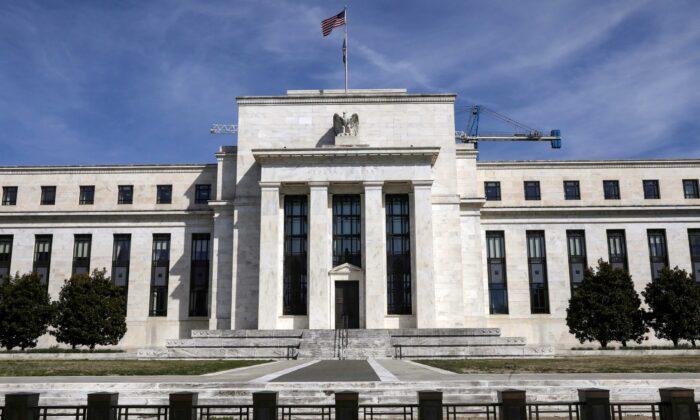WASHINGTON—The Federal Reserve announced on June 16 that it would keep U.S. interest rates near zero as “risks to the economic outlook remain.”
The U.S. central bank made a significant revision to its short-term inflation forecast, reflecting large spikes in consumer and producer prices caused by supply-chain bottlenecks and strong household demand.
“Progress on vaccinations has reduced the spread of COVID-19 in the United States. Amid this progress and strong policy support, indicators of economic activity and employment have strengthened,” Fed officials said in a revised statement.
“The path of the economy will depend significantly on the course of the virus. Progress on vaccinations will likely continue to reduce the effects of the public health crisis on the economy, but risks to the economic outlook remain.”
Following a two-day meeting of the Federal Open Market Committee (FOMC), the central bank announced it would hold the federal funds rate at a range of zero to 0.25 percent, in line with expectations. Fed officials could begin to raise interest rates in 2023, earlier than previously forecasted, according to the new projections.
However, a growing minority of committee participants sees a rate increase much sooner than 2023. Seven of 18 participants now predict at least one quarter-point rate hike as soon as 2022.
The committee also made upgrades to its economic forecasts. Gross domestic product is now expected to grow by 7 percent (median) in 2021, compared to the 6.5 percent increase projected in March.
In its announcement, the Fed removed language that stated: “The ongoing public health crisis continues to weigh on the economy.”
“Even so, the recovery is incomplete and risks to the economic outlook remain,” Fed Chairman Jerome Powell said at a post-meeting press conference.
According to the Fed, sectors hit hard by the pandemic remain weak. Fed officials “expect to maintain an accommodative stance of monetary policy,” he said.
The central bank will continue to buy at least $120 billion per month of Treasuries and mortgage-backed securities, to support the economy and the flow of credit.
The Fed’s inflation projection rose sharply to 3.4 percent for this year, up from the 2.4 percent projected in March. But officials expect inflation to return to 2.1 percent next year and remain close to its long-term inflation target of 2 percent, indicating that inflationary pressures will be “transitory.”
Core inflation, which excludes volatile food and energy components, is also revised to 3 percent for 2021, up from the 2.2 percent projected earlier.
The Dow Jones Industrial Average dropped by more than 300 points following the Fed’s announcement on inflation.
The larger-than-expected increase in producer and consumer prices has added fuel to the inflation debate recently. Producer prices as of May were up by 6.6 percent year-on-year–the largest increase since the data was created in 2009. Consumer prices in May also rose by 5 percent from a year ago, recording the biggest annual spike since 2008, as supply chain bottlenecks and surging household demand continue to lift prices. Core inflation also recorded the largest gain in 28 years.
“If we saw signs that the path of inflation or longer-term inflation expectations were moving materially and persistently beyond levels consistent with our goal, we'd be prepared to adjust the stance of monetary policy,” Powell said in response to rising criticisms that the Fed dismisses inflation fears.
However, factors that are driving up inflation will be temporary, he reiterated.
Powell also said that the committee had a discussion about reducing its bond purchases but stated that it would depend on the pace of economic recovery.
The committee participants believe that “the economy has clearly made progress,” Powell said, noting that it still has to make “substantial further progress” toward the Committee’s maximum employment and price stability goals.
“Participants expect continued progress ahead toward that objective. And assuming that is the case, it will be appropriate to consider announcing a plan for reducing our asset purchases at a future meeting,” he said.
Fed officials would give advance notice before announcing their decision on the tapering process, Powell said.
A few Fed officials have supported the idea of starting the tapering debate sooner rather than later. However, they’re in the minority, according to Deutsche Bank. These officials include Philadelphia Fed President Patrick Harker, Boston Fed President Eric Rosengren, and Dallas Fed President Robert Kaplan. While these officials contribute to the FOMC discussion, none are voting members of the committee this year.





